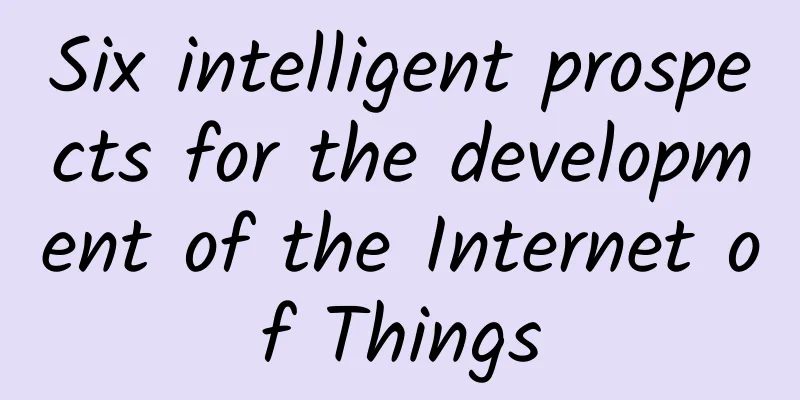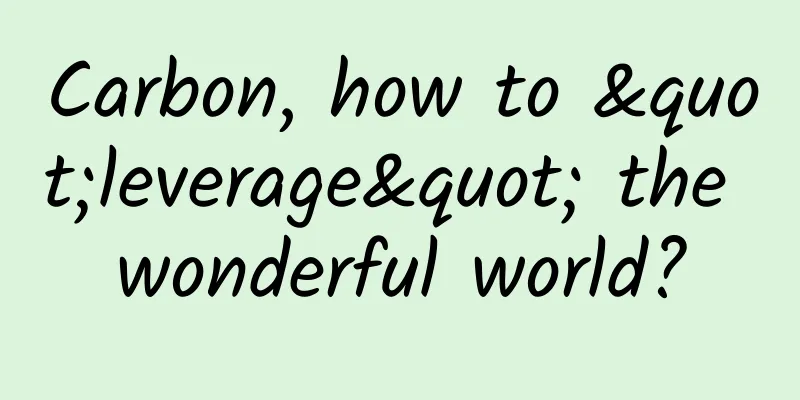Six intelligent prospects for the development of the Internet of Things

|
No one knows exactly how many things in the world have the characteristics of the Internet of Things (IoT). According to the Internet Data Center (IDC) in 2013, there are about 9.1 billion things with the characteristics of the Internet of Things. This number will increase to 28 billion by 2020 and further to 50 billion by 2025. You can almost guess any number, but any guess will be a very large number. So what do these things with the characteristics of the Internet of Things bring us? What is the meaning of their existence? The following will try to list the intelligent prospects of the Internet of Things. As you can see, the components of the Internet of Things can be organized in a variety of ways. Here, I use the "halo" pattern to see how the principles of the Internet of Things can be applied to the following four levels: individuals and their surroundings (transportation, housing, etc.), how the surrounding environment is organized (towns, cities, highways and other transportation systems that connect them), the range of social activities that take place in the surrounding environment (mainly business activities, but also travel, hospitality, entertainment and leisure activities), and the pillars that these activities rely on (including agriculture, energy, transportation, logistics, etc.). This is not an exhaustive classification method (it excludes all military-related content and some content related to law enforcement), nor is it an optimal classification method, but this classification method is very useful for explaining the opportunities in the Internet of Things industry. 1. Personal life We are no strangers to increasingly powerful portable devices, but most of the devices we carry every day are far from being "smart" from the perspective of the Internet of Things: your clothes don't know how often they are worn or washed; your shoes don't know how many steps they have taken; your keys don't remind you whether you have locked the door when you go out. These devices will all become smart in the next decade. Currently, these devices can communicate with each other through "personal area networks" (Personal Area Networks), and they can also connect to your mobile phone, although important security and privacy mechanisms are still missing. Let’s add two more areas to the human-centric Internet of Things: Personal hygiene, fitness, diet, and the broader medical diagnosis and treatment industry. With the improvement of global nutrition and hygiene and the continuous increase in human life expectancy, the market in this area is huge. The traditional event-oriented health care model does not meet the economy of scale, so new models with predictive and forward-looking characteristics will be more in line with market needs. Continuous monitoring of health and wellness indicators can help to detect and respond to problems early, so as to avoid the accumulation of problems and the development of chronic diseases. Education and training. In addition to the basic education field, which has been criticized for decades, the Internet of Things can also make training in and outside the classroom more personalized. Training with IoT characteristics can set courses and training content according to individual performance, so as to achieve the effect of teaching students in accordance with their aptitude. 2. Transportation Another potential application of the Internet of Things is transportation. Since this article uses the "halo" organizational model, it will focus on personal transportation, including passenger cars. Although there are applications such as Uber, Lyft and ZipCar that may change user habits, this article assumes that transportation usage patterns will not change fundamentally, and transportation such as family cars and light trucks do not have mature computer platforms that can process large amounts of data to control the engine, transmission system and vehicle handling dynamics and provide assistance and safety to the driver. Of course, the car will be fully automated in the future, but the market space contained in the industry during the transition period is also huge, and innovative ideas in areas such as navigation, accident prevention, dynamic route management and infotainment will be very useful. 3. Home environment The entry "Home environment" contains 4 subcategories: Home security (including door locks, cameras, motion detectors, fire/smoke/flood/gas/intruder alarms, etc.) Infotainment (this segment has made great progress due to the popularity of smart TVs and personalized streaming services) Environmental control (this segment has also grown as more advanced temperature control devices become available) Measurement of objects The big opportunities for IoT in metering are related to integration and ease of use. We are now able to do many things, but the process of doing so is often not simple and standardized. Such processes are not sufficient for mass adoption because they lack a reliable foundation. IoT also has certain business opportunities in the field of household appliances: in addition to realizing functions such as performance adjustment, usage optimization, and regular maintenance, IoT can also provide data sources for automatic inventory management systems, allowing merchants to conduct more targeted sales activities. 4. Urban construction Here, the discussion shifts from the living environment to a broader social environment: communities, towns, and cities. The business opportunities in this area mainly lie in making the structures of social entities such as towns and their combinations more intelligent, while also taking into account the intelligent improvement of the sub-sectors that connect and support these structures, such as infrastructure, service industries, and public utilities. Once everything is instrumented, we can continuously monitor and analyze it, and then improve the efficiency of fixed assets by building more intelligent public infrastructure such as roads, bridges, and buildings (traffic on highways will be smoother; the efficiency of building use will be optimized; entrances and exits will be more convenient; energy efficiency will be improved; fixed garbage collection and recycling services will be more flexible). 5. Commercial logistics The Internet of Things in the commercial field is mostly related to the intelligence of the retail industry (including all stores, shelves and inventory units). It also includes large-scale commodity transportation platforms designed for the three major transportation sectors of sea, land, rail and air transportation, entertainment platforms, personalized digital identification and real-time personalized pricing (including coupons). 6. Industrial production Another huge potential market for the Internet of Things includes crops, livestock (here farming and animal husbandry are classified as subcategories of agriculture), oil and gas production, and transportation. There are a lot of business opportunities in these areas: existing remote sensing technologies can be added to enable continuous analysis of single components or entire systems, and data can be collected to analyze development trends, demand management, and capacity planning. Obviously, these opportunities will (and should) involve multiple things interacting with each other. The digital "you" represented by your PAN will interact with your vehicle to measure the duration of your trip (vehicles often have powerful batteries that can power long-distance broadcasts for better bandwidth and wider coverage). This way you can also find the most convenient airport to park your car, and your IoT connection can even remind you where your car is parked when you return from your trip, or summon an Uber driver for you. If you eat out, your PAN can make reservations for you and arrange for your friends to come over, and it can also give you suggestions for ordering and list the health factors of menu options. In addition, your PAN will remind you to bring necessary medications and remind you not to drive after you have had two drinks. All your messages, texts and emails will be automatically displayed to you. Your smart home system will schedule maintenance visits for you and automatically search for the best price to restock daily necessities before they run out. The application of the Internet of Things can count individual demands on a large scale and summarize the local, regional and national demand levels, thereby providing demand forecasts for businesses in the industrial and commercial sectors so that they can manage their production capacity. In this case, short-term demand fluctuations may be ironed out, at least businesses can receive early warnings and make response plans: they can adjust prices and production capacity to improve production efficiency. These six intelligent prospects are just the tip of the iceberg of the potential of the Internet of Things. Although there is still some distance to maturity, most of the intelligent effects can be achieved at present. We still need to work hard in areas such as standardization, interoperability, resilience and security. The Internet of Things is here, and it will bring overwhelming changes to the world. |
<<: Competition in the consumer drone market is heating up
>>: Android giants are frustrated. Who will lead in the second half of the year in China?
Recommend
French students design radiation-proof underwear to prevent smartphones from killing sperm
Mobile phones emit radio waves, and whether the u...
How to master new media marketing?
In the new media era, where “everyone has their o...
Why do people who don’t feel sick when riding in a gasoline car feel sick when they get on a tram?
Why do people who don’t feel sick when riding in ...
China Passenger Car Association: Wuling Hongguang MINI EV sold 41,255 units in October 2022, a year-on-year decrease of 13.8%
The China Passenger Car Association released the ...
Android N debuts at Google I/O, name still undecided
In the early morning of May 19th, the annual Goog...
The secret of growth: How did Didi discover the most effective channels and growth methods?
Since I joined Didi in August 2015, I have been r...
AI Fun Facts丨The largest model, cognitive ability is inferior to that of the elderly?
The British Medical Journal, a top medical journa...
He used science to guide the development of Daqing Oilfield and was the person who understood China's underground conditions best.
I feel that the current policy of the Party and t...
Are tall people more likely to have lumbar disc herniation?
Rumor: "Tall people have a heavy burden on t...
Why does my throat feel bitter after putting in eye drops?
Audit expert: Liu Dongbao Chief Physician of Opht...
Which one has better car-making genes, Gree or LeTV?
Among Chinese entrepreneurs, apart from Dong Ming...
Trump visited a mask factory without wearing a mask, causing controversy. Before leaving, he promised: I will wear a mask
[Global Times reporter Wang Boyaqi] Trump still d...
[Promotion Case] How was the campaign that brought about a net increase of 60,000 users in 6 days created?
A week before the Mid-Autumn Festival last year, ...
Cook has visited China seven times. Let's talk about his three main purposes.
[[153267]] Since the second visit to China, the m...









